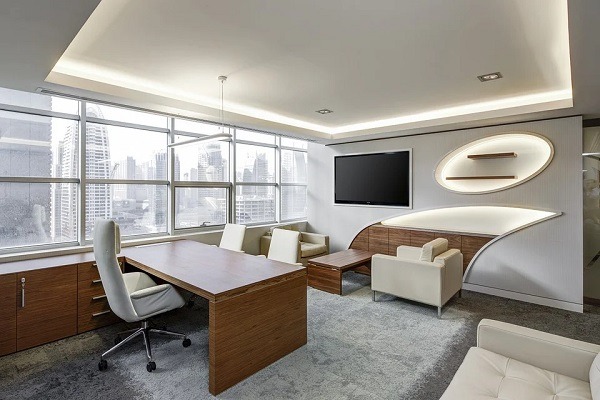If you are big business with lots of space, you might not consider the money it can save by choosing space-saver office furniture. That said, if you are a small business or a cost-conscious larger business, you already appreciate the amount of money and space such furniture can save while also helping you increase productivity. To best benefit from your space-saver furniture, you should consider several things prior to purchase to help ensure the furniture is compatible with your overall office and business goals.
1. Measure
Although installation experts will measure your space, accurate measuring of the space prior to purchase can help you purchase the furniture that exactly fits your space and purposes. For instance, the average comfortable walking space between desks or obstructions ranges from 36 inches to 40 inches. If you eyeball your room, so to speak, you risk purchasing too much furniture or too little. In either case, you could end up either crowding your office or not utilizing it to its most profitable capacity.
2. Consult
Booking a consultant as you tally the furniture you need can assist you in many ways. First, a consultant will take notes on where the furniture will be installed. This is important as a consultant might be able to make suggestions that can facilitate installation or better accommodate overall compatibility between functionality and style. Second, a consultant will be able to make suggestions to help you obtain exactly what you require. Many times, online warehouses have new shipments coming, and a consultant might be able to steer some of this new inventory your way.
3. Virtual tours
Any time you can save time and hard-earned revenue by touring a virtual showroom, you should take advantage. Doing so will allow you to visualize the inventory and make immediate plans about how it might look in your facility. Additionally, a virtual tour can easily help you assess larger desks, tables, or build-outs and match them to your space. Attempting to do this for the first time at an actual showroom can result in multiple trips back and forth.
4. Specifications
When choosing furniture, you should check the specifications against your measurements and personnel. Doing so can help you avoid installation problems or problems that arise when you discover a certain desk layout does not actually match a person’s workflow. Additionally, you can determine if some furniture, such as a corner desk or a wall cabinet, will match a person’s physical or medical requirements.
5. Style
Although style can be a nebulous concept, you already have some notion of the style you want or the message certain pieces send. For instance, a basic style might work for some work centers while furniture for a client’s conference room might need to be more upscale. As you shop for furniture, you should make sure to note which pieces match different stylistic needs because color and shape can impact work productivity and potential sales.
6. Comprehensive thinking
As you shop for different desks and tables, you should also think about your entire building’s needs. For instance, different accessories can make a purchase complete. Thinking about how such things as accessories, acoustic panels, or storage solutions can also complete your office requirements and streamline installation. Additionally, thinking about all the many office solutions a showroom has to offer can prevent some coworkers from being dissatisfied as other coworkers receive exactly what they need. Simply put, not buying all the necessary equipment can be as frustrating as buying the incorrect equipment.
7. Bulk
You will obviously want to save money. Buying in bulk can help you accomplish this goal. Of course, the best way to ensure your bulk purchase saves as much money as possible means considering all your needs. To do this, the aforementioned tip of consulting with an expert can help keep money in your bank account.
8. Testing opportunities
No one likes an uncomfortable chair. Consequently, you should ask about the opportunity to try chairs before you issue payment. Seven days for someone to try out a chair can mean the difference between pure happiness and an aching back. Additionally, you can see if the specifications of certain chairs match the needs of people with special requirements.
Author’s Bio
Lisa Eclesworth is a notable and influential lifestyle writer. She is a mom of two and a successful homemaker. She loves to cook and create beautiful projects with her family. She writes informative and fun articles that her readers love and enjoy. You can directly connect with her on email – lisa@lisaeclesworth.com or visit her website www.lisaeclesworth.com.

